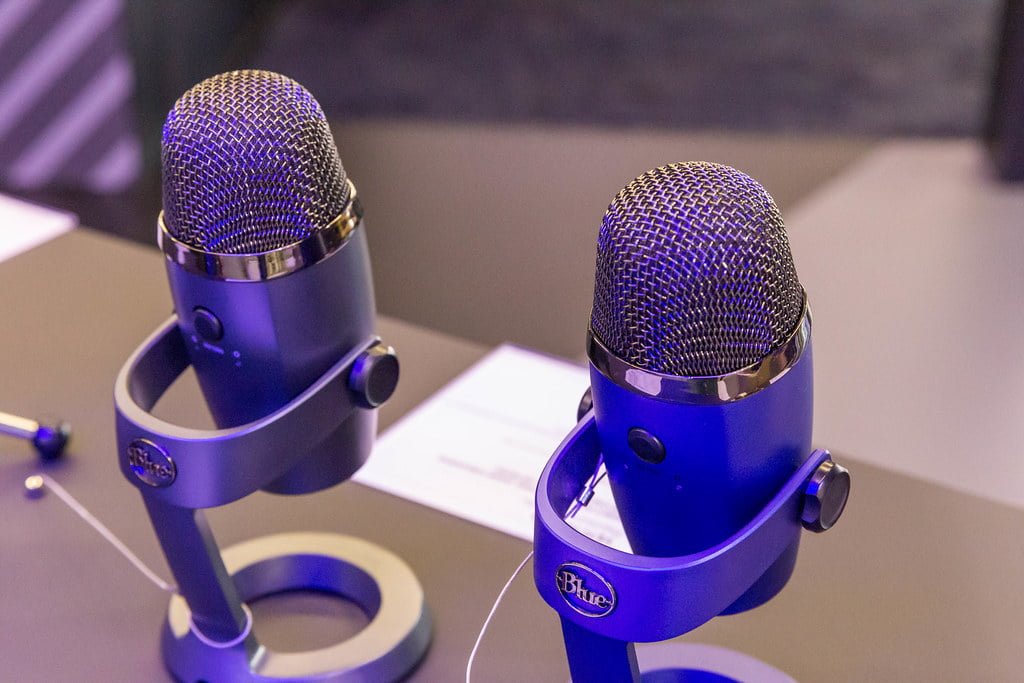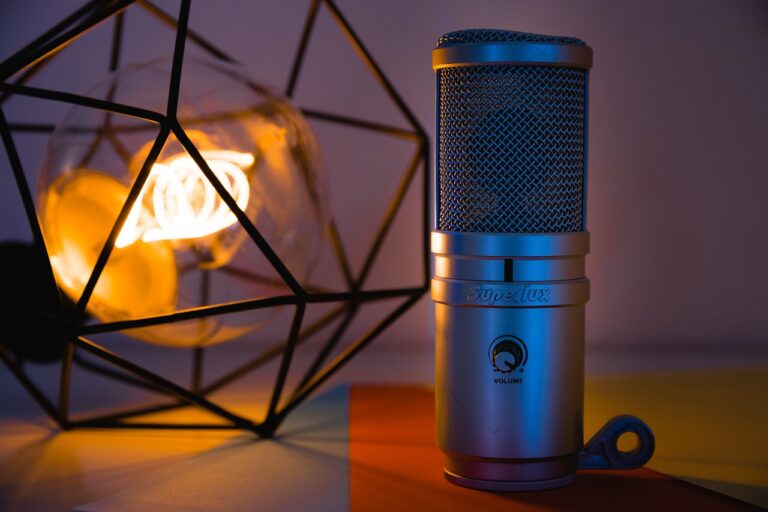Microphone Frequency Response: Matching Your Mic to Your Source
Are you tired of struggling to capture that perfect sound when you're recording vocals or instruments? Well, fear not! I've got just the thing for you. In this article, we're gonna dive headfirst into the fascinating world of microphone frequency response. Trust me, once you understand how to match your mic to your source, you'll be able to achieve audio quality that'll blow your socks off. We'll explore all sorts of things like polar patterns, frequency range, and sensitivity. And hey, I won't leave you hanging without some practical tips on how to choose the right mic. Buckle up, my friend, because we're about to take your recordings to a whole new level of precision and innovation. Let's get ready to rock and roll!
We are supported by our audience. When you purchase through links on our site, we may earn an affiliate commission, at no extra cost for you. Learn more.
Importance of Microphone Frequency Response
The importance of microphone frequency response lies in its ability to accurately capture and reproduce the specific frequencies of your source material. When recording audio, whether it be vocals, instruments, or other sounds, it is crucial to have a microphone that can faithfully capture and reproduce the entire frequency spectrum of your source. Microphone frequency response refers to how well a microphone can accurately pick up different frequencies, ranging from low to high. A microphone with a wide frequency response ensures that no frequencies are lost or misrepresented during the recording process. This is especially important for capturing the nuances and details of your source material, resulting in high-quality and realistic audio reproduction. Therefore, when choosing a microphone, it is essential to consider its frequency response to ensure the best possible sound reproduction.
Understanding Frequency Range and Sensitivity
To better match your microphone to your source, it is important to understand the frequency range and sensitivity of the microphone. The frequency range refers to the range of frequencies that the microphone can accurately capture. A wider frequency range allows for better reproduction of high and low-frequency sounds, resulting in a more accurate representation of the source material. Sensitivity, on the other hand, refers to the microphone's ability to convert sound waves into an electrical signal. A higher sensitivity microphone will pick up quieter sounds with more clarity, while a lower sensitivity microphone may require the source to be closer for optimal recording. Understanding the frequency range and sensitivity of your microphone will help you choose the right mic for your specific recording needs.
Analyzing Different Microphone Polar Patterns
To analyze different microphone polar patterns, you can evaluate how well each pattern captures sound from various directions. Polar patterns determine the sensitivity and directionality of a microphone, making them crucial for capturing high-quality audio. There are several commonly used polar patterns, each with its own strengths and limitations.
The cardioid pattern, for example, captures sound primarily from the front while rejecting sound from the sides and rear. This makes it ideal for recording a single sound source and reducing unwanted background noise. The omnidirectional pattern, on the other hand, captures sound equally from all directions, making it suitable for capturing ambient sounds or group recordings.
Other polar patterns include the figure-eight, which captures sound from the front and back while rejecting sound from the sides, and the supercardioid and hypercardioid patterns, which offer narrower pickup angles for more focused sound capture.
Matching Mic Characteristics to Vocal Recordings
Now let's explore how you can match mic characteristics to your vocal recordings. When it comes to capturing the best vocal performance, choosing the right microphone is crucial. Different microphones have unique characteristics that can enhance or detract from the sound quality of your vocals. To achieve the best match, consider the frequency response of the microphone. This refers to how the microphone captures different frequencies in the audio spectrum. For vocals, a microphone with a flat frequency response is often preferred as it accurately reproduces the singer's voice without adding any coloration. Additionally, pay attention to the microphone's sensitivity, which determines how well it captures soft or loud vocals. By understanding and selecting microphones with suitable characteristics, you can ensure optimal vocal recordings that resonate with your audience.
Choosing the Right Mic for Instruments
Consider the specific microphone characteristics that will best capture the unique sound of your instruments. When choosing the right mic for instruments, it's crucial to understand the frequency response and sensitivity of the microphone. Instruments have different tonal qualities and dynamic ranges, so it's essential to find a microphone that can accurately reproduce those characteristics. For instruments with a wide frequency range, such as pianos or acoustic guitars, a microphone with a flat frequency response is ideal. On the other hand, instruments like drums or electric guitars may require a microphone with a boosted midrange to emphasize their presence in the mix. Additionally, consider the microphone's polar pattern, as this determines how it captures sound from different directions. By carefully selecting a microphone that complements the unique qualities of your instruments, you can achieve a more accurate and professional sound.
Exploring Frequency Response Graphs
When choosing the right mic for instruments, it's important to explore frequency response graphs. These graphs depict how a microphone responds to different frequencies, allowing you to match the mic to your source with greater precision. Frequency response graphs provide valuable information about the microphone's sensitivity to specific frequencies. They show the microphone's ability to reproduce sounds accurately across the entire frequency range. By analyzing the graph, you can determine if a microphone emphasizes certain frequencies or if it has a flat response. This knowledge is crucial for selecting a mic that captures the true essence of your instrument or source. Frequency response graphs empower you to make informed decisions and achieve optimal audio quality in your recordings or live performances.
Factors to Consider When Selecting a Mic
To ensure that you select the right mic for your needs, it is important to understand the various factors to take into account. Firstly, consider the type of microphone. Dynamic microphones are durable and can handle high sound pressure levels, making them ideal for live performances and recording loud instruments. Condenser microphones, on the other hand, offer greater sensitivity and accuracy, making them suitable for capturing vocals and acoustic instruments. Secondly, think about the polar pattern. Omnidirectional mics capture sound from all directions, while cardioid mics focus on sound sources in front and reject noise from the sides and rear. Finally, consider the frequency response. A flat frequency response is ideal for capturing a wide range of sounds accurately, while a tailored response can enhance specific frequencies. By considering these factors, you can find the perfect mic to suit your needs and achieve the best possible audio quality.
Tips for Testing and Comparing Microphones
Now let's delve into some tips for testing and comparing microphones, so you can find the one that best suits your needs. When evaluating microphones, it is crucial to consider factors such as frequency response, sensitivity, and polar pattern. Start by conducting controlled tests in a controlled environment to accurately assess the performance of each microphone. Use the same source material and position the microphones at the same distance to ensure a fair comparison. Pay attention to the microphone's ability to capture detail and accurately reproduce the sound source. Listen for any distortion, noise, or unwanted artifacts. Additionally, consider the microphone's durability, portability, and compatibility with your recording setup. By following these tips, you can confidently choose the microphone that will elevate your audio recordings and meet your specific requirements.
Conclusion
In conclusion, selecting the right microphone for your recording needs is crucial in ensuring accurate and high-quality sound reproduction. Understanding the microphone's frequency response, sensitivity, and polar patterns is essential in matching it to the source. Analyzing frequency response graphs and considering factors such as instrument type and recording environment further aid in making the right choice. Testing and comparing microphones can help determine the best option for achieving optimal audio results.







